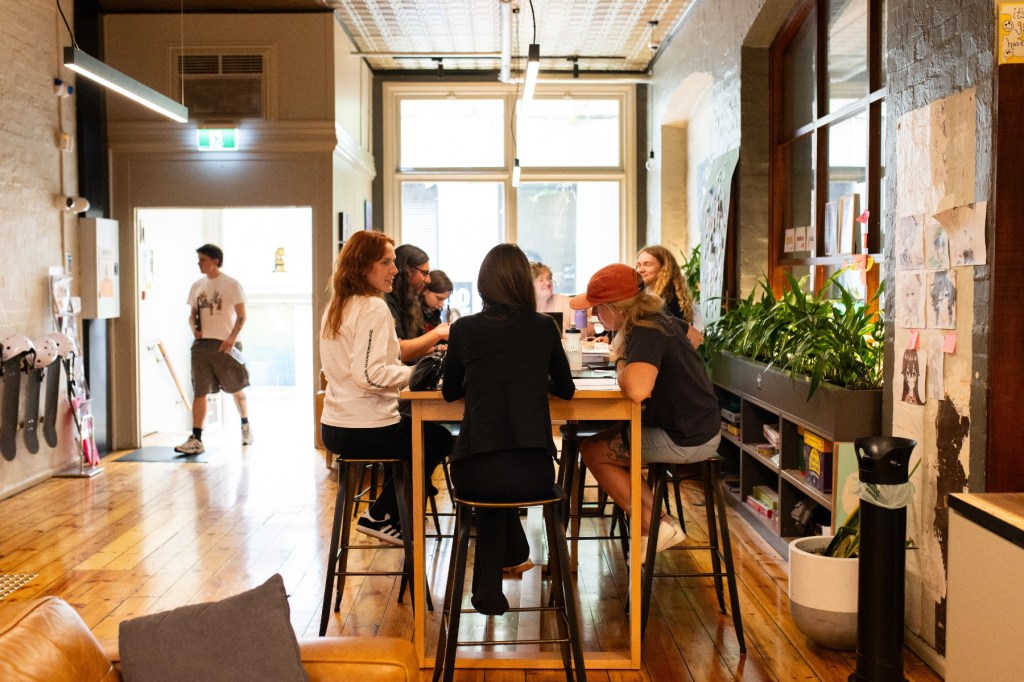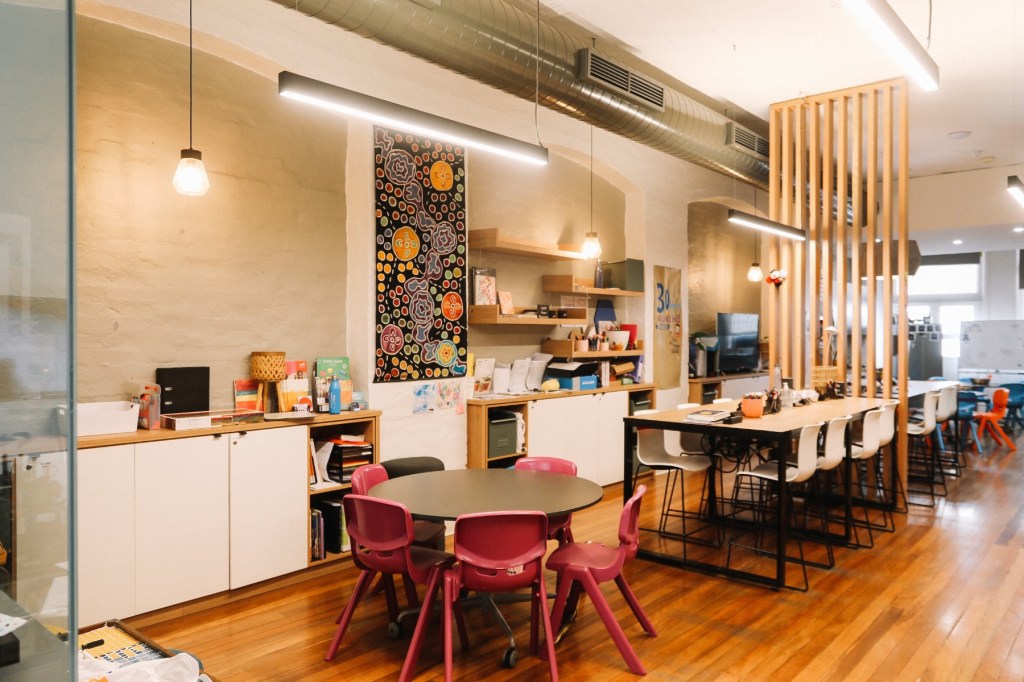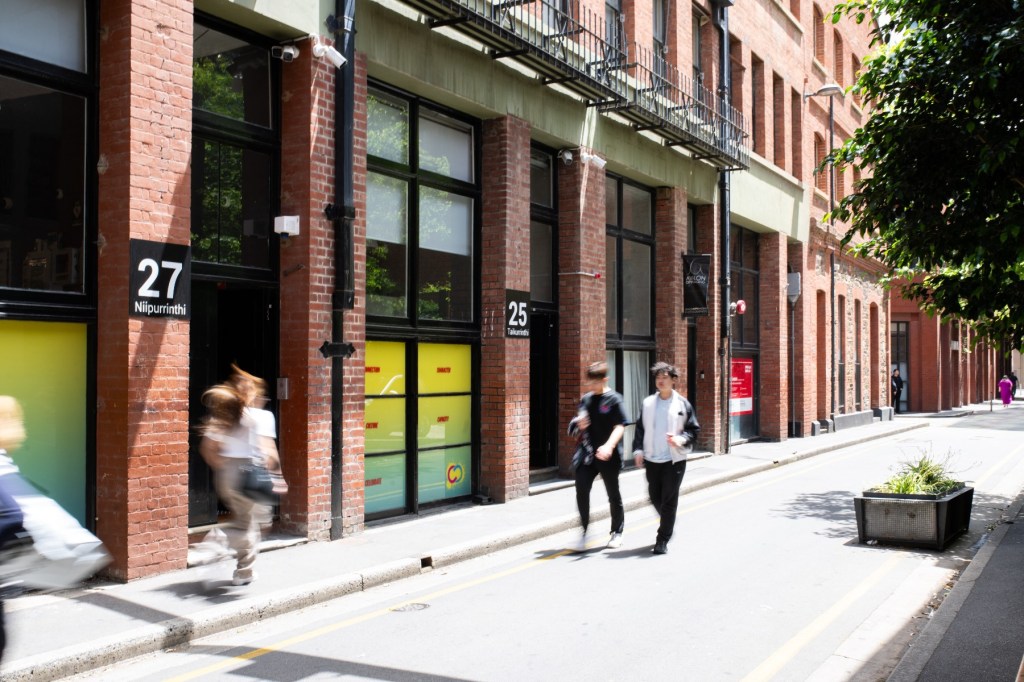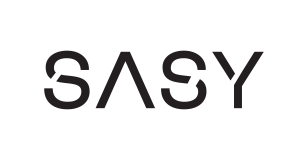Real support, real learning: SASY opens enrolments for 2026
From practical life skills to tailored pathways, Adelaide’s Specialised Assistance School for Youth is proving that the right environment can change everything.

When Aliesha first arrived at the Specialised Assistance School for Youth (SASY) in Adelaide in 2024, she had already decided she was done with education.
“I didn’t get any support in mainstream school – I was getting bullied and beaten up,” she says. “I just had enough and I stopped going. Then we moved towards the city and we heard about SASY from one of my mum’s housing workers. It made me think, ‘Yeah, this is going to be a good fit for me’.”
She enrolled in Term 3 last year, and quickly realised she’d found what she’d been missing. “When I actually came here it was as good as I thought, if not better,” she says.
“Not having to wear a uniform is really good for me … and the lessons as well, how flexible they are, and being able to do things at my own pace. I work better that way rather than having to sit down, shut up, do your work kind of thing. Normal classroom structures don’t work for me. I’m treated more as an individual here.”
Now in Year 11, for Aliesha, SASY has reignited a love of learning. “I do health and wellbeing. I love that — we’re making a cookbook for neurodivergent people and people who struggle planning meals,” she says. “And I love English – the way they run the program is so much more fun than having to read Shakespeare. It feels more relevant, definitely.”
She’s also discovered confidence in areas she once avoided. “Numeracy is great,” she says. “I’ve always been shut down when it comes to maths. And I’ve been doing all of it, completing it early. That’s crazy for me.”
You might like

For students like Aliesha and Krystal, the environment at SASY is designed to meet them where they are.
“I started here mid-2024 and it’s been very supportive,” says Krystal, also in Year 11. “I’ve done a lot of courses — a barista course, my white card because I want to do traffic management, but I can’t do that until I’m 18. I’m thinking of leaving school soon and maybe going to do a TAFE course, either a diploma in community services or early childhood like OSHC. I like helping people a lot, it makes me feel happy.
“I kind of keep to myself, I’m a bit of a loner, but I still feel that I’ve got friends and support here. The community is so nice, everyone is really friendly.”
That sense of belonging is central to SASY’s model, says Kelly Chambers, head of business development. “The way SASY is set up is different from a mainstream school,” she says. “We cater to disengaged young people – students struggling with a variety of complex issues from mental health to bullying or learning challenges that make it harder for them to engage successfully with mainstream education.”
SASY is open plan, modern and furnished to feel welcoming and safe for students. The design throws the traditional school classroom aesthetic out the window, promoting independence and agency in students and encouraging them to take charge of their learning journey – even down to where they sit.
The purposely designed school doesn’t “feel like a school” – when young people come to SASY, it’s a fresh start.
“We have a higher level of support here and we focus on wellbeing just as much as we do on education,” Kelly says. “Our cohort size is a lot smaller so we focus a lot on community, and it’s important for us that students have that sense of independence as well, that they’re choosing learning that works for them and the staff are walking alongside them.”

Head of student outcomes teacher Harvey says the focus is on helping students rediscover curiosity and confidence. “For me, the key thing is to create an environment where students want to come back, because the cohort at SASY is a previously disengaged cohort,” he says. “SASY has 17 teachers but also 17 youth workers. Every young person’s got a youth worker that they work with.”
Having a more diverse education program is important as well.
“What SASY does well is recognising that positive outcomes is a wide range of things,” he says. “It’s that tangible, real-world, hands-on learning that feels connected to something in their life.
“Lots of schools are great but their key matrix might be the number of SACE completers. SASY has that, but, in my opinion, SACE is not itself a pathway: it’s a recognition of learning. If a young person goes to TAFE, goes back to mainstream school, gets a job or just feels more confident in the community, that is a positive outcome.”
For pathways lead TeeJay, success looks different for every student. “Our pathways are tailored to our young people, their learning style, capacity and future goals,” she says. “Pathway directions are introduced in Year 10 – whether that’s life-ready skills, employment or further education, it’s all very individualised.”

Sunny, one of SASY’s first graduates and now a staff member, has seen those transformations up close. “The best thing is seeing how far they’ve come,” she says. “A lot of students come here disengaged, scared of the world, not trusting adults, and by the time they leave they’re full of confidence and have a different perspective – that not everyone’s out to hurt them and there are supports if they seek them and want them.”
Sunny also runs SASY’s Stepping Out program, which provides grants and post-school support for school leavers.
“A positive outcome is not just a graduate – anyone who’s left and gone on to something different can access a grant towards their pathway, so that could help with a licence, laptop, things like that,” Sunny says. “They’re always welcome back.”
Being welcomed back is something former student Brianna knows all about.
“I started at SASY around 2021,” she says. “I wasn’t doing well at school. I was very lost and was having problems at home.
“After a few months of being at SASY, I met so many great people and had a good group of friends. I was still trying to find my footing in life but, over time, with lots of help from all the youth workers, I was getting motivated to live my day-to-day life, which was a huge step for me.”
Unfortunately Brianna suffered a major setback when she lost her mum in 2022. “That was a massive life event for me,” she says. “I fell backwards a little, didn’t do much at SASY but still went every day to have the amazing and endless support from the youth workers.”
In 2023 things began to improve. With SASY’s support, Brianna studied for her Certificate II in Salon Assistance. “I’ve always loved hair but I just didn’t know where to start,” she says. “During my Cert II, things started to look up.”
Earlier this year, Brianna completed her Certificate II and is now six months into an apprenticeship. “I became a part of the SASY leavers program and was able to get financial support to buy TAFE supplies,” she says. “It’s safe to say I wouldn’t be here if I didn’t go to SASY.”
Kelly says that flexibility and connection are the keys to helping young people like Brianna. “A lot of the concepts at SASY are generally about reducing negative associations with schooling, because we acknowledge that the cohort is coming to us with a lot of barriers to entry,” she says.
“Where possible, SASY will try to reduce those obstacles for students so that they can just come to school, because we know that that’s hard enough. As long as they can get to school, the rest of it, we can work on together.”
SASY is now taking enrolment applications for Years 11 and 12 for 2026. “The trust and that connection the students have, both with each other and with staff, are what makes SASY special,” Kelly says.












